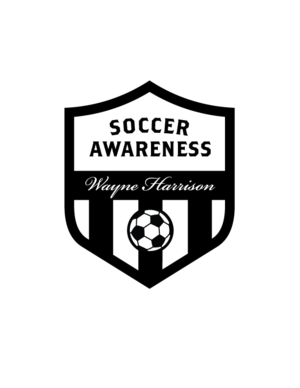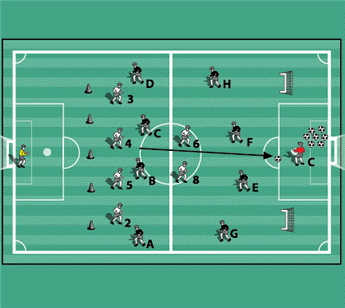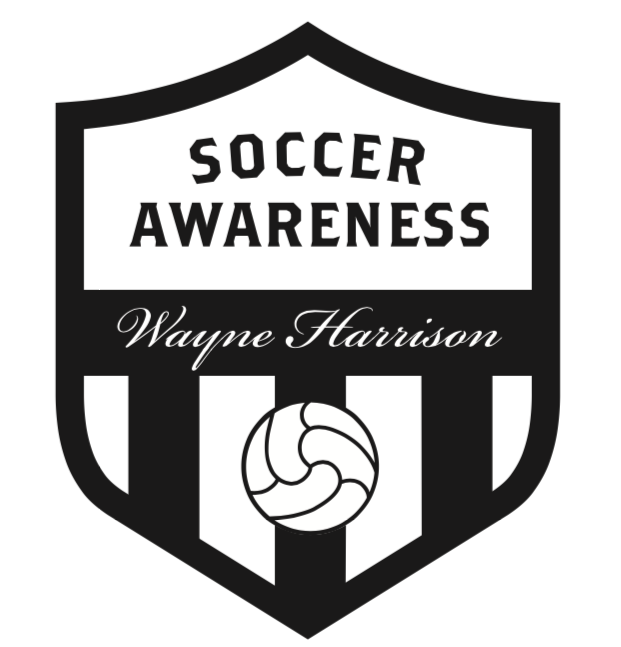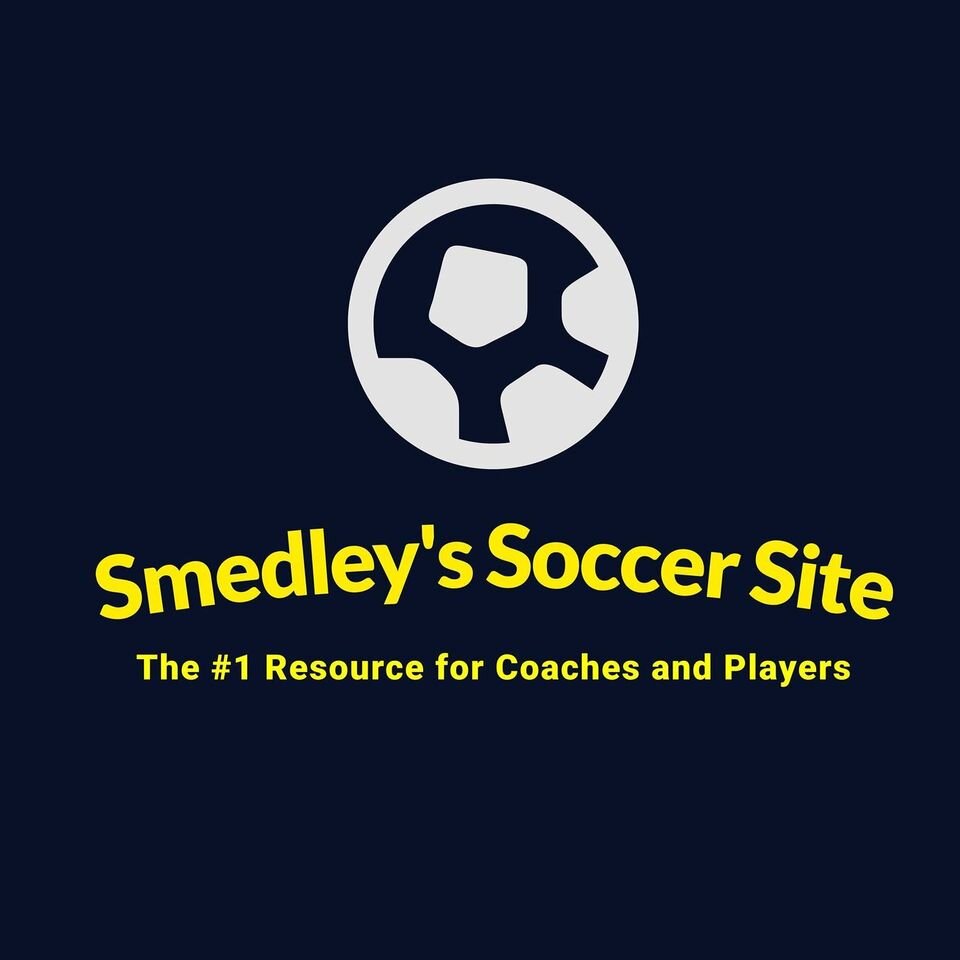Italian Pressing and Conditioning Play Part 4: Basic Examples of the One Word Command Calls and When to Use Them
/This is part 4 of a four part series on Italian Pressing and Conditioning Play.
Get Part 1: Pressing from the Back and Condensing Play
Get Part 2: Pressing with a Back Four and Defensive Midfielder
Up and Hold Calls
- Using two examples here, one with the opponent facing forward with the ball, (F); the other with the opponent facing back with the ball, (E).
- At (F) where the player is facing forward but is pressed well by (6); if the pressure prevents a forward pass we can edge up still using the UP word. This is braver than HOLD. All the above applies for HOLD also for instance if a striker runs forward and the ball can’t be passed forward as in the above examples then let them run offside and hold the back line.
- At (E) in this situation the UP call can be used. (E) Can’t play it forward due to immediate pressure by (8) and it allows the back players to edge up and condense the space and make the opposition strikers work back. Whether (F) passes back or not, whilst the ball can’t be passes forward we can edge up.
- Here we can see where the players position after pushing up. The opponent’s strikers are left well offside and the whole team has moved forward (I have left 4 players in there to emphasize it even more). This puts pressure on the player on the ball in terms of our immediate pressing player but also as a team we are closer to the opponents to help prevent them from receiving the ball or at least be closer to pressure them again wherever the ball is passed.
- If the opponent on the ball is pressured and is facing back towards their own goal then this is a low risk movement. The team can push up also if the opponent is facing forward and the pressing player stops the forward pass but it is more risky and relies on everyone being confident in the pressing player doing his / her job successfully. This player doesn’t have to win possession just prevent the forward pass and if possible force the player on the ball to pass back or at least to the side and not forward.
Hi Coach,
We are excited to provide you with one of our popular soccer coaching ebooks today...
In this Soccer Coaching Ebook you will Learn The SECRETS To Coaching Decision Making And Awareness From Pro Academy Coach Wayne Harrison!
Learn the "Look and Think" Model Of Player Development which will get ever player on your team to think and act several steps ahead of play and think fast!
Click here to download the popular Coaching Soccer Awareness E-Book FREE!
Out Call
- We have cleared it long to the coach (acting as our striker) and everyone sprints out.
- OUT – We have cleared it long and sprint out as quickly as possible leaving opponents offside (we can have kept possession or opponents may get it, we still have time to get out).
- Players must work forward as a team and push up to the half way line if possible. If the opponents win the ball in their defensive third (our attacking third) then by our back players pushing up they in turn force the midfield up who push the strikers up so the team is in a better position to regain possession.
- This is the best position to regain the ball as the strikers are the first line of defense and if they win it in these areas we have a chance to get an immediate strike on goal.
- If the team doesn’t push out so quickly then the whole team’s position suffers. The strikers may try to close down the ball but they lack support as the team is so spread out, this makes it more difficult to win the ball back effectively using a full team press starting with the back four.
This shows four players clearly offside as the back four have pushed up and the team is then condensed up from the back.
Drop Call
- The above example shows there is no pressure (NP) and (G) can pass the ball forward early if need be. Strikers (B) and (C) can even time their runs back or across and forward to stay on side as they have time to do so. Generally a defender will have to track the player’s runs in this situation so the call DROP will be used.
- Just a one word signal can organize a back four defense so everyone knows what to do and reacts together as a unit. Also midfield players close by can react off the call too.
- One word calls ensure everyone will know quickly and effectively what they should do as a unit and as a team.
- Hence the back players can organize their movement as a unit (and therefore influence those in front of them) from five, one word commands. Midfielders (6) and (8) also drop back (though not shown here).
- The whole team drops off. Here the defenders have tracked back to stay between the goal and the opponents strikers particularly the one with possession of the ball. If they hadn’t dropped off then the ball would have been played in behind them and the striker would have had a free run at goal in possession of the ball.
- This can be dangerous if the team defends high up the field and the ball is played behind them as there is a lot of space for the ball to be played into.
- The team can step up and try to play offside even when the opponents have the ball with no pressure to stop the forward pass but the timing here is crucial and is not to be recommended. Between bad timing by the players moving up too late and split second decisions by officials this is a very difficult decision to make.
Slide Call
Moving across the field, don’t take it literally at 90 degrees it could be diagonally in a game (45 above). The furthest players away from the ball are still aware of their immediate opponents but marking in advance of the ball (space). Here (F) passes to (D) and the back four slide over with player (3) applying immediate pressure on the ball.
The midfield two (6) and (8) will turn and also slide over (though not shown here).






















